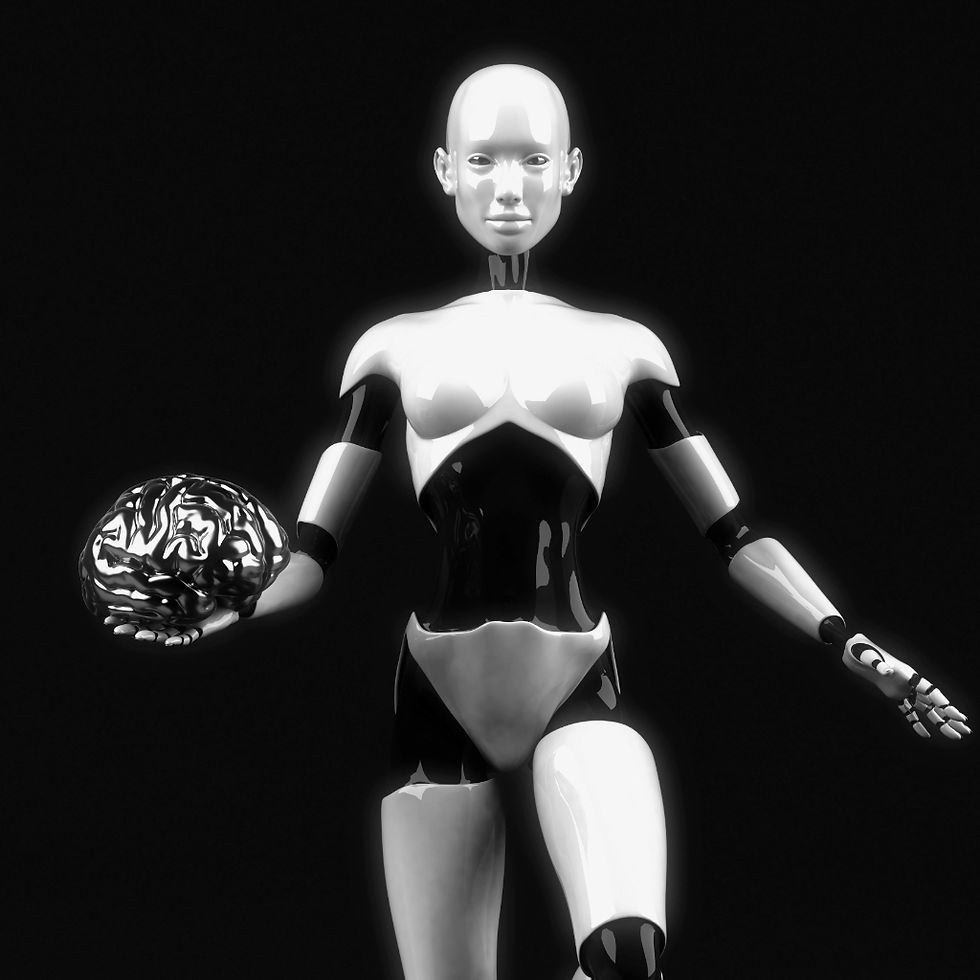Answer Engine Optimization is taking over: why your next website is an answer engine node
- Manelik Sfez

- Jul 29
- 4 min read
Updated: Aug 25
Most websites are still built for the internet of five years ago. They try to look modern. Rank on Google. Convert visitors with popups, buttons, and funnels. But the internet they were built for doesn’t exist anymore. Today, when people search, they don’t scroll. They ask. And when they ask, machines decide what to show. If your site isn’t built to be understood by those machines, you don’t exist. Not in the new, no click internet.
What is Answer Engine Optimization, and why it changes everything
Answer Engine Optimization (AEO) is the evolution of SEO. But it’s not about ranking. It’s about being understood. Where SEO tries to land you on page one of Google, AEO makes you the source used, quoted, and cited by tools like ChatGPT, Perplexity, voice assistants, and AI-powered browsers.
AEO doesn’t ask “How do we rank?”
It asks: “How do we become the answer?”
Most businesses still don’t know this shift is happening. Which is why they’re being silently erased from digital visibility. The ones who show up now are the ones built for it structurally.
From websites to nodes: what AI needs from your digital presence
Machines don’t see what humans see. They don’t care about your color palette, your animations, or how nice your logo looks. They care about what your site says under the surface. That’s why we don’t just build websites. We build nodes: structured digital entities that serve humans and machines.
Think of your site as two layers:
A human layer: clean design, copy, visuals, navigation
An AI layer: semantic structure, context, relationships, and structured metadata
When the two are aligned, you don’t just look good, you become readable. You become a node in the AI web. And that’s what makes you visible in 2025.

AEO does not replace good SEO, it builds on it
In fact, most of the practices used in Answer Engine Optimization are rooted in well-structured SEO: clean HTML, proper use of H1 and H2 tags, internal linking, clear topic clustering.
So what is the difference?
AEO doesn’t stop at ranking: it’s built to be understood by artificial intelligence models. It's about designing websites that not only rank well, but are readable, quotable, and reliable sources for systems like ChatGPT, Perplexity, and voice assistants. That’s why AEO is not an alternative to SEO. It’s the next layer of it.
AEO uses the same foundational elements: clean HTML, semantic headings, internal linking, topic structure. But it goes further by designing those elements not just for humans or Google, but for machines that extract, interpret, and cite answers. In other words, good AEO is advanced SEO, "simply" evolved for how the web works now.
How we build answer engine nodes at Ultrabrand
We don’t retrofit websites with AEO. We design them with it, from the ground up. Every project we take on follows the same method now:
1. Strategize
We run a discovery process to clarify your offer, structure your content universe, and identify how your brand should appear in AI-driven environments.
2. Build
We create a website with two layers: one for humans, one for machines. The AI layer is fully embedded, using structured HTML and JSON-LD. It describes your business in terms that AI can parse, extract, and reference.
3. Grow
We connect the site to a full marketing and automation ecosystem: CRM, lead capture, qualification, email nurturing, analytics, and behavioral automation. Every part is mapped to the customer journey and to the way machines evaluate authority.
4. Launch
We don’t just publish, we activate. From outbound lead generation to AI optimization and chatbot deployment, we ensure your node doesn’t sit idle. It starts working the moment it goes live.
This is not theory. It’s a system that we’ve tested, refined, and now apply by default.
Why AEO is now the foundation of every successful marketing ecosystem
AEO is a shift in infrastructure, not a trend: just like mobile-first became a requirement in the 2010s, AI-first is now the new standard. So every touchpoint of your digital ecosystem should be aligned with this reality:
Your site structure
Your service descriptions
Your content formats
Your automation triggers
Your CRM fields
Even your chatbot logic
When everything is connected, your system doesn’t just speak to humans. It speaks to AI. And when AI listens, it shows you to the right people, at the right time, and in the right context.
Content layering turns positioning into performance.
If your site was built more than two years ago, it was likely built to look good, not to be understood. And if you’re redesigning today, thinking only in terms of layout or branding, you’re solving the wrong problem.
The reality today is that you don’t need a prettier site, but a presence that is visible to the systems people now rely on to find answers. You need to stop building websites and start building answer engine nodes.
Want to see what an AEO-first ecosystem could look like for your business?
Download our Website Rebuild Blueprint, or book a free Digital Check-In to see how we can build your node together.

About the author
Manelik Sfez, founder of the Swiss brand consultancy Ultrabrand, brings 25 years of international business, marketing, and brand strategy experience to the table. He has worked with some of the world’s most iconic brands throughout his career. From luxury goods to global retail, financial services and technological and industry giants, he has guided companies through brand-led transformations that have enabled significant business growth.



Comments